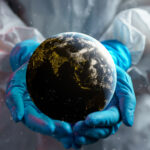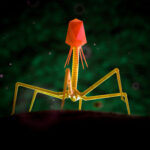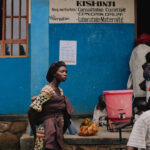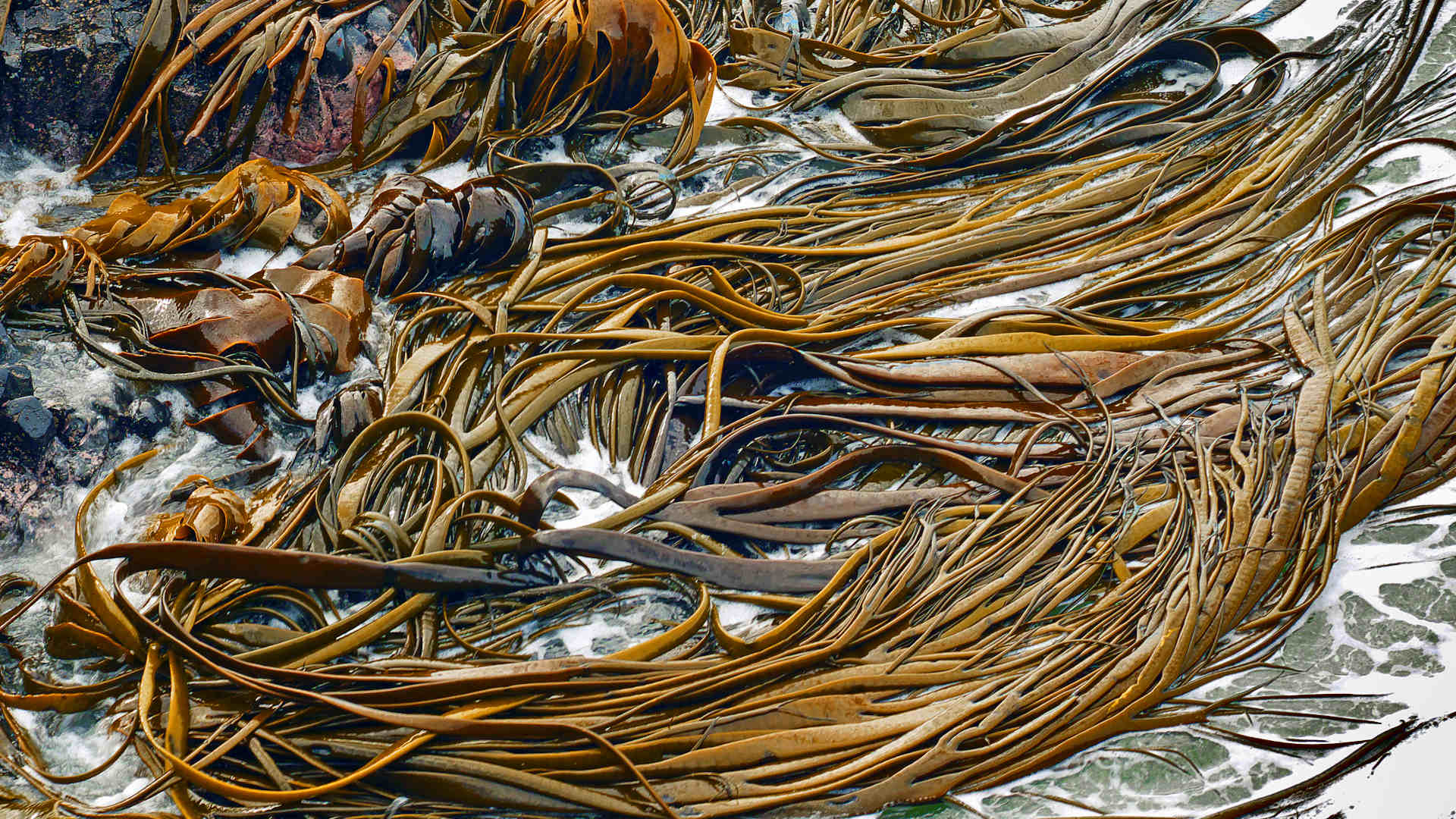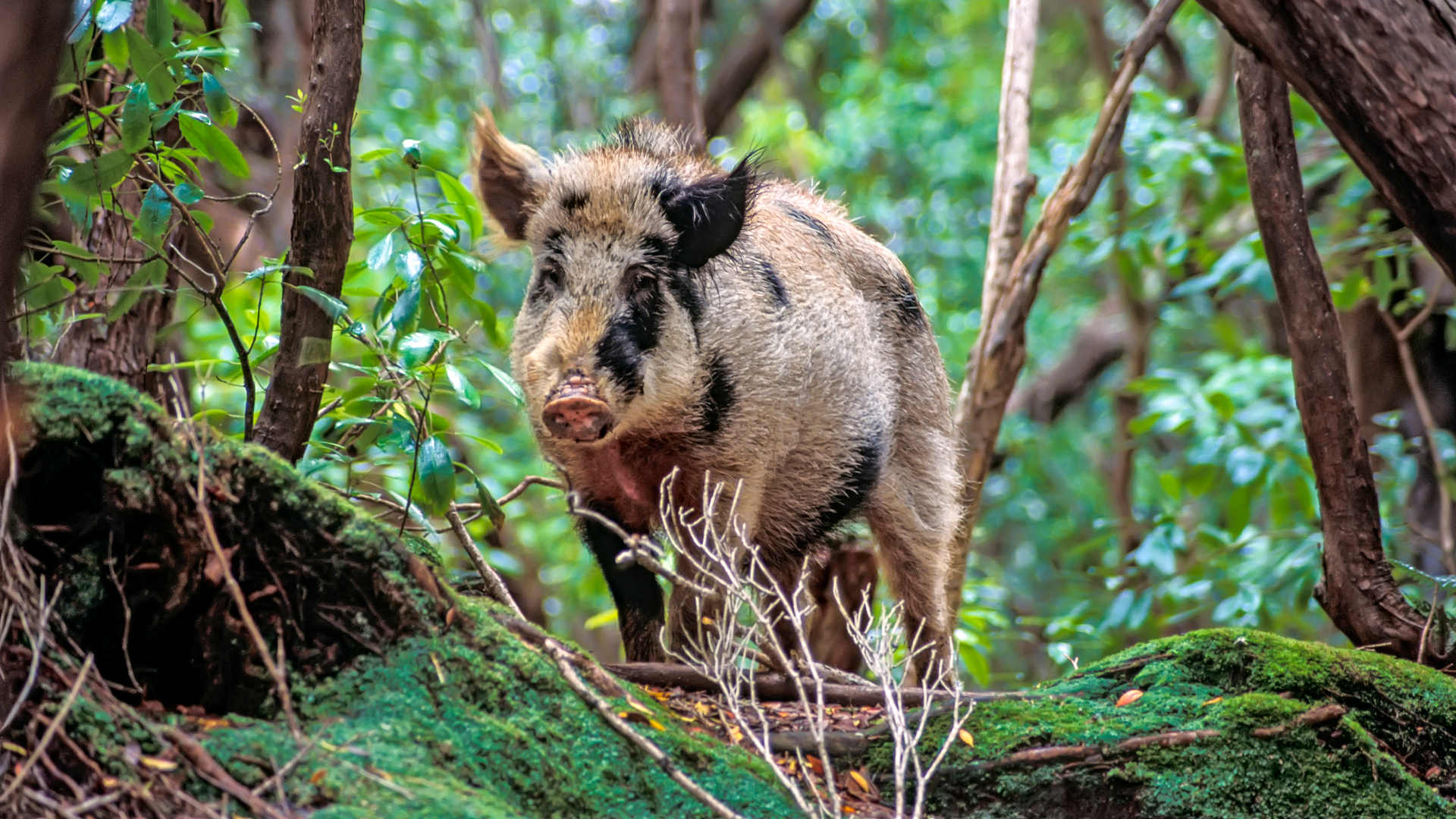How Kelp Keeps a Record of Environmental Calamity
On November 14, 2016, a huge earthquake rocked Kaikōura, a town on New Zealand’s South Island, killing two people, triggering a tsunami, and thrusting stretches of coastline six meters up out of the sea. Biologists Ceridwen Fraser and Jon Waters were watching the aftermath on television. “We were seeing images of kelp and [abalone] lifted out of the water and dying,” says Waters.
For these two scientists who had spent much of the previous decade looking for evidence of ecological upheaval on the coast, Fraser says, there was only one thing to do. “We got on a plane.”
This story is from Hakai Magazine, an online publication about science and society in coastal ecosystems, and is republished here with permission.
A decade or so earlier, in the mid-2000s, Fraser was a student in Waters’s lab at the University of Otago in New Zealand. The pair were studying how the genetics of bull kelp vary across the southern hemisphere when they noticed something very strange.
The kelp living along the coast of mainland New Zealand, Fraser says, was highly genetically diverse. But the kelp inhabiting the cold, subantarctic islands scattered across the Southern Ocean was all very similar. Because of the vast distance between these smaller islands, Fraser had expected the kelp populations to be quite different from one another. The lack of genetic diversity revealed two things: the islands’ kelp had all been wiped out and later recolonized, and the recolonizing kelp had come from a single source. From there, it didn’t take Fraser and Waters long to realize they were really looking at places where kelp had recovered after a massive ecological disturbance. But what kind of disturbance?
“Bull kelp doesn’t like ice,” says Fraser. As the scientists went on to show, encroaching ice had wiped out the islands’ kelp during the Last Glacial Maximum 20,000 years ago. But, Fraser says, New Zealand itself was far enough north to avoid the worst of the Ice Age’s grip, explaining why its kelp populations are so much older and more genetically diverse.
This was a valuable insight for paleoclimatologists. “It’s actually really hard for researchers to work out where the ice was in the last ice age,” says Waters. “They have to take cores from the ocean floor — it’s incredibly expensive. But here we had a completely new approach.” The study showed that sea ice had extended a lot farther north during that period than scientists previously thought.
By 2016, Fraser and Waters had proven that they could uncover signs of historical environmental upsets by looking at kelp genetic diversity. So when the Kaikōura earthquake struck New Zealand, wiping out numerous kelp beds, the pair leaped at the opportunity to watch the process play out in the present.
Seven years on, says Fraser, the recovery is still only just beginning. The uplifted parts of the coast are slowly being recolonized by small algae. In time, bull kelp will once again get a foothold. It could come from the next bay or the other side of the world.
Bull kelp colonization is a high-stakes game of first come, first served. At any one time, there are an estimated 70 million individual chunks of bull kelp riding the currents of the Southern Ocean. The fronds — and the tiny creatures that live on them — can end up almost anywhere.
David Schiel, a marine ecologist from the University of Canterbury in New Zealand, says bull kelp is almost purpose-built for long-distance travel. “When it breaks off, it floats. It can stay active for months and still go through its reproductive cycles.”
Despite the constant traffic, genetic exchange between far-flung islands is far from fluid. “We always think if something can get from A to B, then there must be gene flow between the populations,” says Fraser. “But actually, there’s not necessarily any gene flow because the local inhabitants have a real advantage.”
“It’s actually really hard for researchers to work out where the ice was in the last ice age. They have to take cores from the ocean floor — it’s incredibly expensive. But here we had a completely new approach.”
If a floating piece of bull kelp reaches a shore already dense with algae, there is almost no way it can get established, Schiel says. Bull kelp has the best chance of getting a foothold if it washes up on a completely bare stretch of rock. Once there, it needs to mingle its sperm or eggs with those of a reproductively active member of the opposite sex. In other words, “it’s hard to get in there,” says Schiel, “and when they do, there are probably not a lot of competitors getting in.”
But, says Fraser, when an earthquake, marine heatwave, or other deadly catastrophe occurs, “suddenly there are no locals left to compete with the immigrants, so when a few arrive, all of their gametes have a really good chance of getting a foot in the door.”
Once these bull kelp colonists become established, they and their offspring can dominate the population for centuries or even millennia to come.
That kelp tends to colonize quickly and then hang on for the long haul showed Fraser and Waters that studying kelp genetic diversity might be an even better way to identify historical natural disasters than they thought.
Having spent nearly 20 years developing their technique, 2023 brought Fraser and Waters an opportunity to flip their process on its head and really prove its worth. On a coastal rock platform near Rārangi, a town on the northeast end of New Zealand’s South Island, the team stumbled on another pocket of odd kelp genetics. The kelp, they found, shared the genes of a population from 300 kilometers away. Something had clearly happened here.
Subsequent geological studies confirmed what the kelp suggested: around 2,000 years ago, the Rārangi platform had been thrust skyward in an earthquake.
“We wouldn’t have even looked at that region if it wasn’t for the genetics showing us something unusual,” says Waters. “And hey, presto, the geologists had another look, and the evidence was really clear.”
Bull kelp, scientists are coming to understand, holds a record of the southern hemisphere’s turbulent tectonic past. It offers a way to confirm known disasters and find hints of previously undocumented ones.
“We can now look into the past and find signatures of previous disturbances that weren’t known about,” says Waters. “There’s often a hidden history you can reveal using genetic approaches and thereby understand more about a region’s history.”
Bill Morris is a writer and filmmaker based in southern New Zealand. He specializes in telling stories about science and wildlife.
This article first appeared in Hakai Magazine and is republished here with permission. Read more stories like this at hakaimagazine.com.







